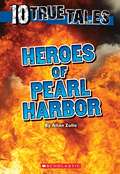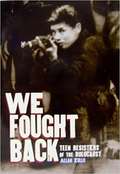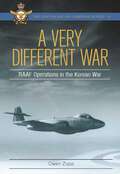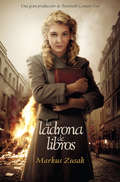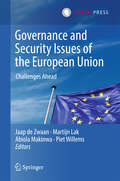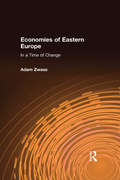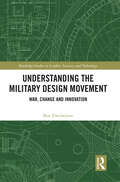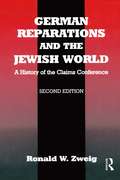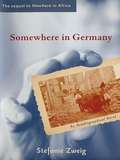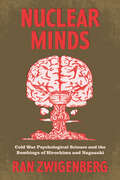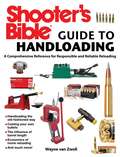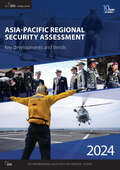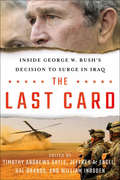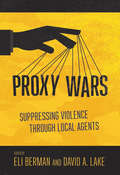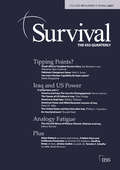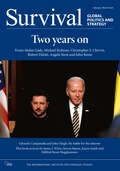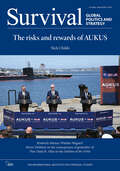- Table View
- List View
Heroes of Pearl Harbor (Ten True Tales)
by Allan ZulloA massive bomb explosion destroys the battleship USS Arizona and pitches Cassin Young, captain of the nearby USS Vestal, overboard into a flaming oil slick. The dazed commander must find a way back to his ship and save her before she sinks too. <p><p> Julio DeCastro and Joe Bulgo can hear sailors trapped inside the capsized USS Oklahoma, which is rapidly filling with water. After toiling all day and all night with their pneumatic hammers, can the exhausted workers cut through the steel hull and save their comrades in time? <p> Despite suffering serious wounds, Chief Petty Officer John Finn continues to stand out in the open, firing his machine gun at a swarm of Japanese fighter planes while yelling to his fellow sailors, "No one attacks America and gets away with it!" <p> These and other real-life heroes risked their lives during the surprise attack on Pearl Harbor, which forced America into World War II. You will never forget their courageous true stories
Teens at War: Ten True Tales
by Allan ZulloThis inspiring collection of stories about patriotic teens who served their countries courageously during times of war, spans the time period of the Revolutionary War through the Korean War.
War Heroes: Ten True Tales
by Allan Zullo"Staff Sergeant Chad Malmberg must find a way to save his convoy ambushed by well-armed insurgents. He faces grim odds, because he and his small band of soldiers are outnumbered ten to one... and they're running out of ammo. Five times throughout a fierce firefight, Marine Scout Sniper Scott Montoya spots an injured comrade in the street. And five times Scott disregards his own safety and rushes out into the open, braving enemy fire to rescue each wounded Marine. These and other American heroes risked their lives serving their country in Iraq. You will never forget their incredible true stories." -Back Cover
We Fought Back: Teen Resisters of the Holocaust
by Allan ZulloFifteen year old Paul just helped blow up a Nazi supply train. Can he escape the Germans hunting him for revenge? Fifteen year old Sarah has lost many loved ones to Nazi murderers. Will partisan fighters accept her into their secret group? Seventeen year old Frank and his team are preparing to attack a heavily armed German convoy. Can they succeed against overwhelming odds--and survive? These and other Jewish young people took on incredible risks to fight back against the Nazis in WWII. You will never forget their true stories of courage and survival.
World War II Heroes: Ten True Tales
by Allan ZulloThis is a good book about 10 different men who fought in the War. Each man earned the Congressional Medal of Honor.
Heroes of the Holocaust: True Stories of Rescues by Teens
by Allan Zullo Mara BovsunThe accounts are based exclusively on personal, lengthy interviews conducted with or about each person featured in this book. Using real names, dates, and places, the stories are written as factual and truthful versions of the heroes' recollections, although some of the dialogue has been re-created.
A Very Different War: RAAF Operations in the Korean War
by Owen ZuppThe Korean War lies between the enormity of the Second World War and the controversy of Vietnam. Although it often slips through the cracks of history, it represented a global shift as two opposing ideologies clashed and the Cold War heated up. The fledgling United Nations was called to act, and Australia joined the 21 nations committed to supporting South Korea. Within days of the North Koreans crossing the 38th Parallel, the RAAF was flying missions from its base in Japan. In the ensuing three years, the RAAF gained respect among its peers and the attention of the opposing military powers. When the war reached a crisis point, with UN forces pinned down and threatened with being pushed off the peninsula into the sea, the RAAF was at the epicentre. During the war, the RAAF entered the jet age, and the transition was not without challenges and losses. Ultimately, a generation of RAAF leaders emerged from the ranks of sergeant pilots and junior officers who underwent their baptism of fire on the Korean Peninsula. Using No 77 Squadron operations as a timeline, this concise history of the RAAF involvement in the war examines the roles of the transport unit, nurses, ground crews, prisoners of war and those who still have no known resting place.
The Book Thief (anniversary Edition)
by Markus ZusakLiesel Meminger is a foster girl living outside of Munich, who scratches out a meager existence for herself by stealing when she encounters something she can’t resist–books. With the help of her accordion-playing foster father, she learns to read and shares her stolen books with her neighbors during bombing raids as well as with the Jewish man hidden in her basement.
La ladrona de libros
by Markus ZusakÉrase una vez un mundo donde las noches eran largas y la Muerte contaba su propia historia. Érase una vez una ladrona que robaba libros y regalaba palabras. En el pueblo vivía una niña que quería leer, un hombre que tocaba el acordeón y un joven judío que escribía cuentos hermosos para escapar del horror de la guerra. Al cabo de un tiempo, la niña se convirtió en una ladrona que robaba libros y regalaba palabras. Y con esas palabras se escribió una historia hermosa y cruel. Una novela tremendamente humana, emocionante e inolvidable, que describe las peripecias de una niña alemana de nueve años desde que es dada en adopción por su madre hasta el final de la II Guerra Mundial. Su nueva familia, gente sencilla y nada afecta al nazismo, le enseña a leer y, a través de los libros, a distraerse durante los bombardeos y combatir la tristeza. Pero es el libro que ella misma está escribiendo el que finalmente le salvará la vida.
Governance and Security Issues of the European Union
by Jaap De Zwaan Martijn Lak Abiola Makinwa Piet WillemsAt present, Europe is confronted with a number of serious common and global challenges, the most important being the economic crisis, migration issues, geopolitical tensions at its external borders, terrorism, as well as climate change and environmental challenges. These developments have a huge impact on the stability and security of the continent as a whole and on each individual European country. Europe, more particularly the European Union, has to organise its governance and security infrastructure in such a way that it can cope with these global threats. This book collects a number of topics and themes connected to the governance and/or security dimensions of EU co-operation. The Parts of the book deal respectively with: the values and general principles of EU co-operation; institutional aspects of EU co-operation; a number of individual policy domains; areas of European criminal law; the external relations of the EU; and the future functioning of EU co-operation as a whole.
Economies of Eastern Europe in a Time of Change: In A Time Of Change
by Adam ZwassThe development and use of the atomic bombs at Hiroshima and Nagasaki number among the formative national experiences for both Japanese and Americans as well as for 20th-century Japan-US relations. This volume explores the way in which the bomb has shaped the self-image of both peoples.
Understanding the Military Design Movement: War, Change and Innovation (Routledge Studies in Conflict, Security and Technology)
by Ben ZweibelsonThis book explains the history and development of the military design movement, featuring case studies from key modern militaries. Written by a practitioner, the work shows how modern militaries think and arrange actions in time and space for security affairs, and why designers are disrupting, challenging, and reconceptualizing everything previously upheld as sacred on the battlefield. It is the first book to thoroughly explain what military design is, where it came from, and how it works at deep, philosophically grounded levels, and why it is potentially the most controversial development in generations of war fighters. The work explains the tangled origins of commercial design and that of designing modern warfare, the rise of various design movements, and how today’s military forces largely hold to a Newtonian stylization built upon mimicry of natural science infused with earlier medieval and religious inspirations. Why does our species conceptualize war as such, and how do military institutions erect barriers that become so powerful that efforts to design further innovation require entirely novel constructs outside the orthodoxy? The book explains design stories from the Israel Defense Force, the US Army, the US Marine Corps, the Canadian Armed Forces, and the Australian Defence Force for the first time, and includes the theory, doctrine, organizational culture, and key actors involved. Ultimately, this book is about how small communities of practice are challenging the foundations of modern defence thinking. This book will be of much interest to students of military and strategic studies, defence studies, and security studies, as well as design educators and military professionals.
German Reparations and the Jewish World: A History of the Claims Conference
by Ronald W. ZweigGerman Reparations and the Jewish World" has become a standard reference work since it was first published. Based extensively on archival sources, the author examines the difficult debate within the Jewish world whether it was possible to reach a material settlement with Germany so soon after Auschwitz. Concentrating on how the money was spent in rebuilding Jewish life, he also analyzes how the reparations payments transformed the relations bteween Israel and the diaspora, and between different Jewish political and ideological groups. This revised and expanded edition includes material on sensitive relief programmes from archives that have only recently been opened to researchers. In a new, extensive introductory essay the author reexamines the reparations, restitution and indemnification processes from the perspective of 50 years later.
Somewhere in Germany
by Stefanie ZweigSomewhere in Germany is the sequel to the acclaimed Nowhere in Africa, which was turned into the Oscar-winning film of the same name. This novel traces the return of the Redlich family to Germany after their nine-year exile in Kenya during World War II. In Africa, Walter had longed for his homeland and dreamed of rebuilding his life as a lawyer, yet ultimately he and his family—wife Jettel, daughter Regina, and baby Max—realize that Germany seems as exotic and unwelcoming to them in 1947 as Kenya had seemed in 1938. Hunger and desperation are omnipresent in bombed-out Frankfurt, and this Jewish family—especially Regina, who misses Africa the most—has a hard time adjusting to their new circumstances. Yet slowly the family adapts to their new home amidst the ruins In Frankfurt, Regina matures into a woman and, though her parents want her to marry an upstanding Jewish man, her love life progresses in its own idiosyncratic fashion. She develops a passion for art and journalism and begins her professional career at a Frankfurt newspaper. Walter at last finds professional success as a lawyer, but never quite adjusts to life in Frankfurt, recalling with nostalgia his childhood in Upper Silesia and his years in Africa. Only his son Max truly finds what Walter had hoped for: a new homeland in Germany Although the Redlichs receive kindness from strangers, they also learn anti-Semitism still prevails in post-Nazi Germany. They partake in the West German “economic miracle” with their own home, a second-hand car, and the discovery of television, but young Max’s discovery of the Holocaust revives long-buried memories. Rich in memorable moments and characters, this novel portrays the reality of postwar German society in vivid and candid detail.
Hiroshima
by Ran ZwigenbergIn 1962, a Hiroshima peace delegation and an Auschwitz survivor's organization exchanged relics and testimonies, including the bones and ashes of Auschwitz victims. This symbolic encounter, in which the dead were literally conscripted in the service of the politics of the living, serves as a cornerstone of this volume, capturing how memory was utilized to rebuild and redefine a shattered world. This is a powerful study of the contentious history of remembrance and the commemoration of the atomic bomb in Hiroshima in the context of the global development of Holocaust and World War II memory. Emphasizing the importance of nuclear issues in the 1950s and 1960s, Zwigenberg traces the rise of global commemoration culture through the reconstruction of Hiroshima as a 'City of Bright Peace', memorials and museums, global tourism, developments in psychiatry, and the emergence of the figure of the survivor-witness and its consequences for global memory practices.
Nuclear Minds: Cold War Psychological Science and the Bombings of Hiroshima and Nagasaki
by Ran ZwigenbergHow researchers understood the atomic bomb’s effects on the human psyche before the recognition of Post-Traumatic Stress Disorder. In 1945, researchers on a mission to Hiroshima with the United States Strategic Bombing Survey canvassed survivors of the nuclear attack. This marked the beginning of global efforts—by psychiatrists, psychologists, and other social scientists—to tackle the complex ways in which human minds were affected by the advent of the nuclear age. A trans-Pacific research network emerged that produced massive amounts of data about the dropping of the bomb and subsequent nuclear tests in and around the Pacific rim. Ran Zwigenberg traces these efforts and the ways they were interpreted differently across communities of researchers and victims. He explores how the bomb’s psychological impact on survivors was understood before we had the concept of post-traumatic stress disorder. In fact, psychological and psychiatric research on Hiroshima and Nagasaki rarely referred to trauma or similar categories. Instead, institutional and political constraints—most notably the psychological sciences’ entanglement with Cold War science—led researchers to concentrate on short-term damage and somatic reactions or even, in some cases, on denial of victims’ suffering. As a result, very few doctors tried to ameliorate suffering. But, Zwigenberg argues, it was not only that doctors “failed” to issue the right diagnosis; the victims’ experiences also did not necessarily conform to our contemporary expectations. As he shows, the category of trauma should not be used uncritically in a non-Western context. Consequently, this book sets out, first, to understand the historical, cultural, and scientific constraints in which researchers and victims were acting and, second, to explore how suffering was understood in different cultural contexts before PTSD was a category of analysis.
Nuclear Minds: Cold War Psychological Science and the Bombings of Hiroshima and Nagasaki
by Ran ZwigenbergHow researchers understood the atomic bomb’s effects on the human psyche before the recognition of Post-Traumatic Stress Disorder. In 1945, researchers on a mission to Hiroshima with the United States Strategic Bombing Survey canvassed survivors of the nuclear attack. This marked the beginning of global efforts—by psychiatrists, psychologists, and other social scientists—to tackle the complex ways in which human minds were affected by the advent of the nuclear age. A trans-Pacific research network emerged that produced massive amounts of data about the dropping of the bomb and subsequent nuclear tests in and around the Pacific rim. Ran Zwigenberg traces these efforts and the ways they were interpreted differently across communities of researchers and victims. He explores how the bomb’s psychological impact on survivors was understood before we had the concept of post-traumatic stress disorder. In fact, psychological and psychiatric research on Hiroshima and Nagasaki rarely referred to trauma or similar categories. Instead, institutional and political constraints—most notably the psychological sciences’ entanglement with Cold War science—led researchers to concentrate on short-term damage and somatic reactions or even, in some cases, on denial of victims’ suffering. As a result, very few doctors tried to ameliorate suffering. But, Zwigenberg argues, it was not only that doctors “failed” to issue the right diagnosis; the victims’ experiences also did not necessarily conform to our contemporary expectations. As he shows, the category of trauma should not be used uncritically in a non-Western context. Consequently, this book sets out, first, to understand the historical, cultural, and scientific constraints in which researchers and victims were acting and, second, to explore how suffering was understood in different cultural contexts before PTSD was a category of analysis.
Shooter's Bible Guide to Handloading: A Comprehensive Reference for Responsible and Reliable Reloading
by Wayne Van ZwollA thorough resource on handloading at home, Shooter’s Bible Guide to Handloading provides detailed information about the history of handloading and key figures’ innovations, a simple explanation of hand reloading, selecting the basic tools needed, and choosing your cases, dies, primers, and powders as well as step-by-step instructions for reloading firearm cartridges and how to test your loads at the range. The text is supplemented by more than one hundred detailed photographs that illustrate the various types of reloading equipment available and provide guidance in performing the actions that result in a handloaded cartridge. The Shooter’s Bible Guide to Handloading covers interesting engineering questions the handloader may consider, including bullet integrity, copper bullets, and energy versus killing power. Other topics covered include: Handloading the old-fashioned way Casting your own bullets The influence of barrel length Economics of home reloading And much more! Pick up a copy of the Shooter’s Bible Guide to Handloading to learn everything you need to know about reloading by hand at home.
Asia-Pacific Regional Security Assessment 2024: Key developments and trends
The Asia-Pacific Regional Security Assessment (APRSA) examines key regional security policies and challenges relevant to the proceedings of the IISS Shangri-La Dialogue, Asia’s premier defence summit convened by the International Institute for Strategic Studies (IISS). It is published and launched at the Dialogue and the issues analysed within its covers are central to discussions at the event and beyond. This eleventh edition comes as the APRSA celebrates its first decade. A dozen IISS experts reflect on a decade of change and continuity across major security policies and challenges facing the Asia-Pacific region. Three themes materialise across six chapters: the pressure and constraints surrounding great-power competition, the enduring value of alliances and partnerships and the impact of advanced and emerging technology for regional security dynamics.In addition to the introduction, the APRSA will now feature a special-topic chapter providing a deeper analysis of an enduring security policy and challenge. The other five chapters investigate further key dimensions of the regional security environment, supported by maps, graphs, charts and tables. The six chapters of this year’s APRSA cover the following topics: Combined military exercises in the Asia-Pacific Crisis management between the United States and China India’s defence partnership in the Asia-Pacific Diplomatic approaches to managing the Myanmar conflict Disinformation campaigns in the Asia-Pacific The Asia-Pacific air-to-air challenge
The Last Card: Inside George W. Bush's Decision to Surge in Iraq
This is the real story of how George W. Bush came to double-down on Iraq in the highest stakes gamble of his entire presidency. Drawing on extensive interviews with nearly thirty senior officials, including President Bush himself, The Last Card offers an unprecedented look into the process by which Bush overruled much of the military leadership and many of his trusted advisors, and authorized the deployment of roughly 30,000 additional troops to the warzone in a bid to save Iraq from collapse in 2007.The adoption of a new counterinsurgency strategy and surge of new troops into Iraq altered the American posture in the Middle East for a decade to come. In The Last Card we have access to the deliberations among the decision-makers on Bush's national security team as they embarked on that course. In their own words, President George W. Bush, Vice President Dick Cheney, National Security Advisor Stephen Hadley, Secretary of State Condoleezza Rice, White House Chief of Staff Joshua Bolten, Secretary of Defense Robert Gates, and others, recount the debates and disputes that informed the process as President Bush weighed the historical lessons of Vietnam against the perceived strategic imperatives in the Middle East. For a president who had earlier vowed never to dictate military strategy to generals, the deliberations in the Oval Office and Situation Room in 2006 constituted a trying and fateful moment.Even a president at war is bound by rules of consensus and limited by the risk of constitutional crisis. What is to be achieved in the warzone must also be possible in Washington, D.C. Bush risked losing public esteem and courted political ruin by refusing to disengage from the costly war in Iraq. The Last Card is a portrait of leadership—firm and daring if flawed—in the Bush White House.The personal perspectives from men and women who served at the White House, Foggy Bottom, the Pentagon, and in Baghdad, are complemented by critical assessments written by leading scholars in the field of international security. Taken together, the candid interviews and probing essays are a first draft of the history of the surge and new chapter in the history of the American presidency.
Proxy Wars: Suppressing Violence through Local Agents
The most common image of world politics involves states negotiating, cooperating, or sometimes fighting with one another; billiard balls in motion on a global pool table. Yet working through local proxies or agents, through what Eli Berman and David A. Lake call a strategy of "indirect control," has always been a central tool of foreign policy. Understanding how countries motivate local allies to act in sometimes costly ways, and when and how that strategy succeeds, is essential to effective foreign policy in today's world. In this splendid collection, Berman and Lake apply a variant of principal-agent theory in which the alignment of interests or objectives between a powerful state and a local proxy is central. Through analysis of nine detailed cases, Proxy Wars finds that: when principals use rewards and punishments tailored to the agent's domestic politics, proxies typically comply with their wishes; when the threat to the principal or the costs to the agent increase, the principal responds with higher-powered incentives and the proxy responds with greater effort; if interests diverge too much, the principal must either take direct action or admit that indirect control is unworkable. Covering events from Denmark under the Nazis to the Korean War to contemporary Afghanistan, and much in between, the chapters in Proxy Wars engage many disciplines and will suit classes taught in political science, economics, international relations, security studies, and much more.
Survival 49.1: Survival 49.1, Spring 2007
Volume 49 of Survival- The IISS Quarterly publication. (The International Institute for Strategic Studies) First published in Spring 2007. Routledge is an imprint of Taylor & Francis, an informa company.
Survival: February-March 2024
Survival, the IISS’s bimonthly journal, challenges conventional wisdom and brings fresh, often controversial, perspectives on strategic issues of the moment.In this issue: Franz-Stefan Gady and Michael Kofman highlight the pitfalls of grafting a Western manoeuvre-oriented approach to war onto the Russia–Ukraine conflict Irene Mia examines the chasm between Javier Milei’s dramatic rhetoric and the domestic and international obstacles he faces to changing Argentina’s foreign and economic policies Edoardo Campanella and John Haigh outline the necessity of meaningful dialogue between the West and China to prevent the internet’s fragmentation John Raine assesses the geopolitical trends that the Gaza war has set in motion and the issues they create for Ukraine’s defence against Russia And seven more thought-provoking pieces, as well as our regular Book Reviews and Noteworthy column. Editor: Dr Dana AllinManaging Editor: Jonathan StevensonAssociate Editor: Carolyn WestEditorial Assistant: Conor Hodges
Survival: October – November 2023
Survival, the IISS’s bimonthly journal, challenges conventional wisdom and brings fresh, often controversial, perspectives on strategic issues of the moment. In this issue: Nick Childs assesses the ambitions and perils of the AUKUS partnership for Australia, the United Kingdom and the United States Kimberly Marten explores how the demise of its key figures will affect future operations of the Wagner Group and similar Russian paramilitaries Steven Feldstein investigates the uses and risks of generative-AI systems From the Survival archives, the late Pierre Hassner interpreted Russia’s August 2008 attack on Georgia as signalling the emergence of a new cold war with the West Dana H. Allin reflects on the European vision advanced by members of a rapidly disappearing generation of scholars who had lived through war and sought to preserve and extend peace And eight more thought-provoking pieces, as well as our regular Book Reviews and Noteworthy column. Editor: Dr Dana Allin Managing Editor: Jonathan Stevenson Associate Editor: Carolyn West Editorial Assistant: Conor Hodges
